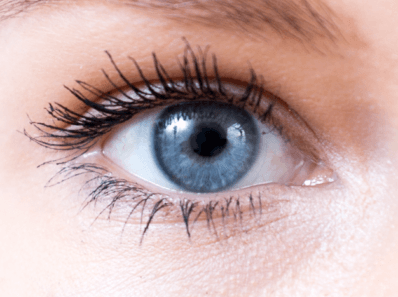Mullein (Verbascum thapsus), a common yet often overlooked herb, has a long-standing history in traditional medicine for its many benefits, especially when it comes to respiratory health. Known for its tall, stately stalks and large, soft leaves, Mullein is often found in wild meadows and along roadsides in many parts of the world. Despite its somewhat humble beginnings, this herb has become an essential part of modern herbal medicine, and for good reason.
In this blog post, we’ll explore everything you need to know about Mullein, from its historical uses to modern-day applications and how you can incorporate it into your wellness routine.

What is Mullein?
Mullein is a biennial plant that can grow up to 6 feet tall. The leaves are soft, covered in fine hairs, and often have a silvery appearance. The plant blooms in the second year, producing tall spikes of yellow flowers. While it’s native to Europe and Asia, Mullein can now be found in parts of North America and other temperate regions around the world.
Mullein has been used for centuries in traditional medicine, with recorded use going back to ancient Greece and Rome. It’s most famous for its role in respiratory health, but it offers a range of other benefits as well.
The Traditional Uses of Mullein
Mullein was historically used for a variety of ailments, but it’s especially known for its soothing effects on the respiratory system. The leaves and flowers of the plant were commonly made into teas, tinctures, and poultices to treat conditions such as:
1. Respiratory Health:
Mullein is perhaps best known for its role as a remedy for coughs, bronchitis, and other respiratory issues. The leaves contain mucilage, a gel-like substance that helps soothe irritated tissues and reduce inflammation in the respiratory tract. In traditional herbalism, Mullein was commonly used to treat dry, persistent coughs, asthma, and even tuberculosis.
Mullein is believed to help loosen mucus and phlegm, making it easier to expel from the lungs. This expectorant quality is why it’s often used in combination with other herbs like thyme, licorice root, or eucalyptus for respiratory support.
2. Ear Infections:
Mullein has also been used in folk medicine as a remedy for ear infections. Mullein oil, often infused with garlic or other herbs, can be used topically to help reduce ear pain and inflammation. The antimicrobial properties of Mullein make it a go-to treatment for ear-related issues in many traditional healing systems.
3. Skin Conditions:
The leaves of Mullein have been applied topically to treat wounds, burns, and other skin conditions. Its anti-inflammatory and antimicrobial properties are thought to help promote healing and soothe irritated skin.
Modern-Day Uses of Mullein
In contemporary herbalism, Mullein remains a popular herb, particularly for respiratory health. However, it has also gained recognition for its other potential uses. Let’s dive into some of the modern ways Mullein is used in natural wellness practices.
1. Mullein for Respiratory Support:
While Mullein’s use for respiratory issues is rooted in tradition, modern science is beginning to support its benefits. Studies have found that Mullein extract may help reduce inflammation in the airways, improve airflow, and ease coughing. As an expectorant, Mullein is commonly included in herbal cough syrups and teas designed to support the lungs and clear mucus.
In addition to its use as a treatment for coughs and bronchitis, Mullein may also help with conditions like asthma and chronic obstructive pulmonary disease (COPD). Its ability to relax the respiratory muscles and open up the airways makes it a valuable ally in managing these conditions.
2. Mullein Oil for Ear Health:
Mullein oil is one of the most popular ways to use this herb in modern times. The oil is typically made by infusing Mullein flowers in a carrier oil like olive oil. It is commonly used to help soothe earaches, reduce inflammation, and treat ear infections.
The oil can be applied topically by placing a few drops into the ear or massaging it around the outer ear. Mullein oil is often combined with other healing herbs, such as garlic or calendula, to boost its therapeutic effects.
3. Mullein for Anxiety and Stress:
Although not traditionally associated with mental health, Mullein is sometimes used to calm the nervous system and promote relaxation. It is thought to have mild sedative properties, which can help ease anxiety and stress. A Mullein tea before bed may help promote restful sleep, making it a great option for those struggling with insomnia or restlessness.
How to Use Mullein
There are several ways to incorporate Mullein into your wellness routine. Let’s take a look at the most common methods:
1. Mullein Tea:
Mullein tea is a soothing and easy way to enjoy the benefits of this herb. To make the tea, steep dried Mullein leaves (or flowers) in hot water for 10-15 minutes. The resulting infusion has a mild, slightly earthy flavor. You can add honey or lemon to taste, or combine Mullein with other herbs like peppermint or ginger for added flavor and benefits.
2. Mullein Tincture:
A Mullein tincture is a concentrated herbal extract that can be taken in small doses. Tinctures are often used for their potency and ease of use, as they allow for quick absorption. A few drops of Mullein tincture can be taken directly under the tongue or added to water or tea.
3. Mullein Oil:
Mullein oil is primarily used for ear infections, but it can also be massaged into sore muscles or inflamed skin. It’s typically used in combination with other healing herbs, such as garlic or lavender. To use Mullein oil for earaches, place a few drops into the ear canal or rub around the outer ear.
4. Mullein Capsules or Tablets:
For those who prefer a more convenient method of use, Mullein is available in capsule or tablet form. These can be taken according to the manufacturer’s instructions. Mullein capsules are a great option for those who want to support their respiratory health with a consistent daily dosage.
Potential Side Effects and Precautions
While Mullein is generally considered safe for most people, it’s important to take a few precautions:
Allergic Reactions: Some individuals may have allergic reactions to Mullein, especially when it’s applied topically. If you have a known sensitivity to plants in the Scrophulariaceae family (such as snapdragons), you may want to avoid Mullein.
Drug Interactions: Mullein can interact with certain medications, especially those related to the respiratory system. Always consult a healthcare provider if you are on medication and considering using Mullein, particularly if you have asthma, COPD, or are using sedatives.
Conclusion
Mullein is a versatile and powerful herb with a rich history of use in traditional medicine. Whether you’re seeking support for respiratory health, looking to soothe an ear infection, or hoping to find a calming herbal remedy, Mullein is an herb worth considering. It has earned its place as a staple in herbal medicine, offering a natural and holistic approach to wellness.
If you’re looking to try Mullein for the first time, start with a simple Mullein tea or try Mullein oil for ear discomfort. As with any herb, it’s always a good idea to consult with a healthcare provider, especially if you have any existing medical conditions or are pregnant.
So, next time you come across this humble yet potent plant in a wild field or herbal shop, you’ll know just how valuable it can be in supporting your health!


